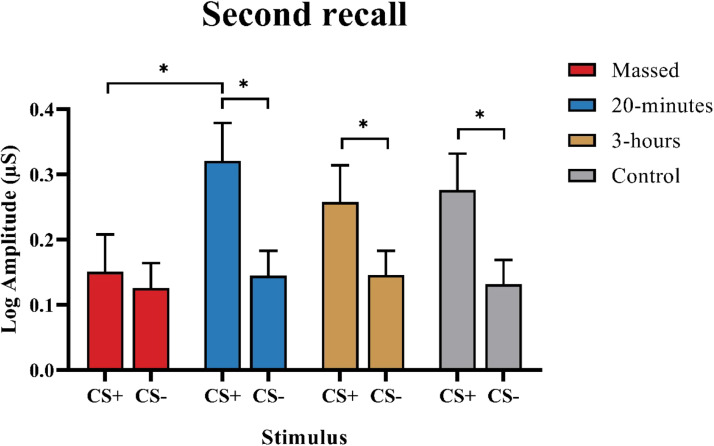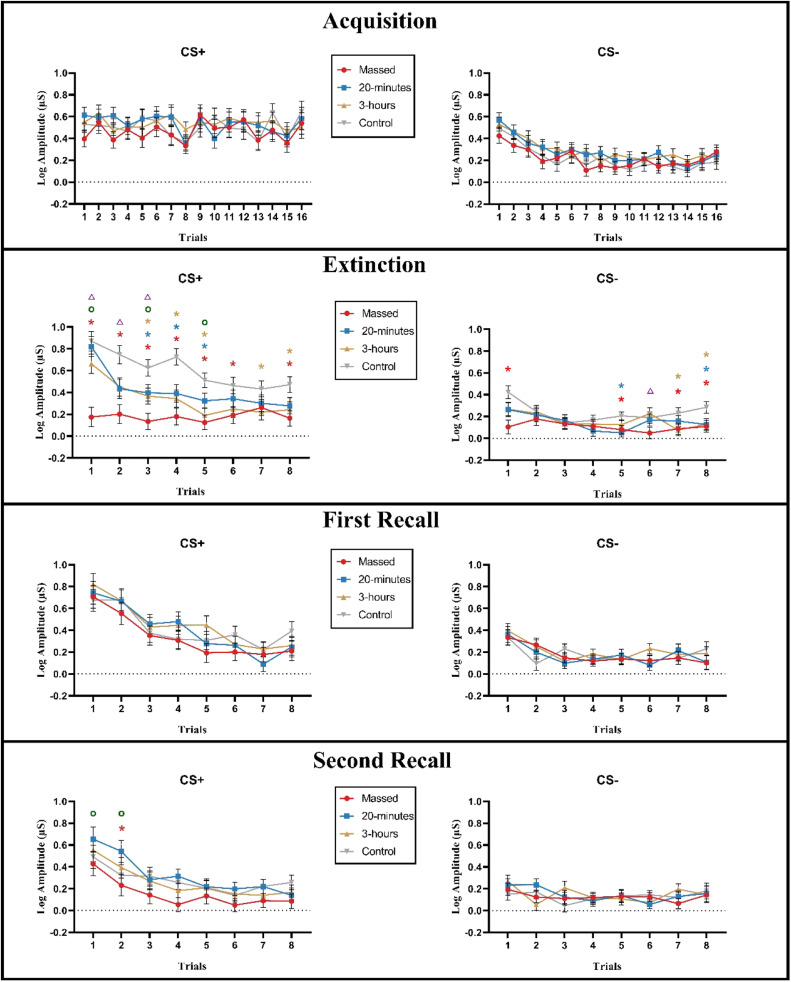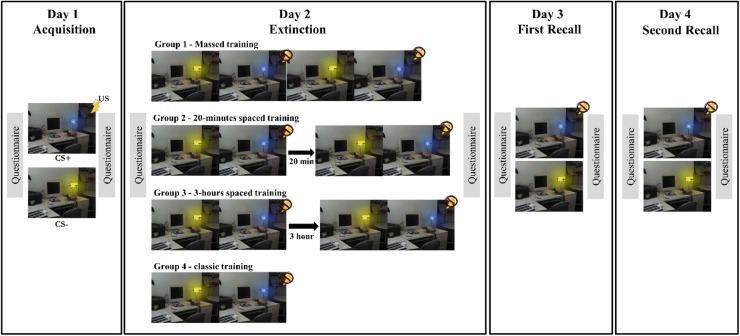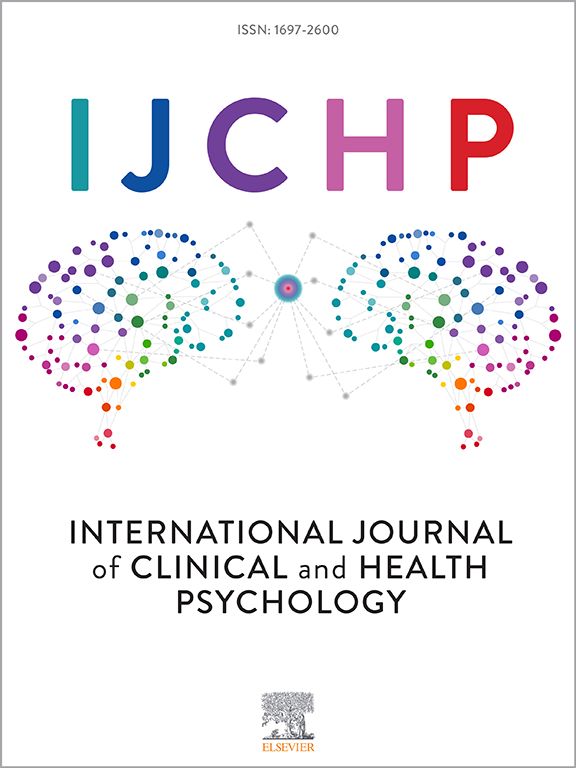The impact of temporal distribution on fear extinction learning
IF 4.4
1区 心理学
Q1 PSYCHOLOGY, CLINICAL
International Journal of Clinical and Health Psychology
Pub Date : 2025-01-01
DOI:10.1016/j.ijchp.2024.100536
引用次数: 0
Abstract
Fear extinction is the foundation of exposure therapy for anxiety and phobias. However, the stability of extinction memory diminishes over time, coinciding with fear recovery. To augment long-term extinction retention, the temporal distribution of extinction learning sessions is critical. This study investigated the effects of massed and spaced training (with short and long intervals) on extinction retention compared to a classic protocol. 120 healthy participants were recruited and randomly divided to massed training, spaced training with 20-minutes or 3-hours intervals, and a control group. The control group completed half the number of extinction trials compared to the other groups. The fear conditioning/extinction paradigm consisted of three consecutive days of fear acquisition, extinction, and recall, followed by a second recall one week later. Skin conductance response (SCR) and self-rating questionnaires (ratings of valence, arousal, and fear) were recorded and analyzed using mixed model ANOVAs. The results revealed that during the extinction phase, both massed and spaced protocols showed significantly lower SCRs compared to the control group, with massed training resulting in the largest effects. In the second recall, only the massed extinction group showed no significant difference in SCRs between threat and safety cues. The self-report assessments indicated that the massed extinction group showed furthermore lower arousal than the control group in the first recall. These results suggest that both massed and spaced training promote fear extinction learning, but only massed training improves long-term extinction retention. This study highlights the impact of the temporal distribution and trial number of extinction learning on extinction retention, offering insights for future research on improving fear extinction efficacy.



时间分布对恐惧消退学习的影响。
恐惧消除是焦虑和恐惧症暴露疗法的基础。然而,消失记忆的稳定性随着时间的推移而减弱,与恐惧恢复相一致。为了增强长期的消退记忆,消退学习的时间分布是至关重要的。本研究调查了大规模和间隔训练(短间隔和长间隔)与经典训练方案相比对消退保留的影响。招募了120名健康参与者,随机分为集训组、间隔20分钟或3小时的训练组和对照组。与其他组相比,对照组完成的灭绝试验次数只有一半。恐惧条件反射/消除范式包括连续三天的恐惧获取、消除和回忆,一周后进行第二次回忆。记录皮肤电导反应(SCR)和自评问卷(效价、觉醒和恐惧评分),并使用混合模型方差分析(anova)进行分析。结果显示,与对照组相比,在消退阶段,大规模训练和间隔训练的scr均显著降低,其中大规模训练的影响最大。在第二次回忆中,只有大规模灭绝组在威胁和安全线索之间的scr没有显着差异。自我报告评估表明,大规模灭绝组在第一次回忆中表现出比对照组更低的觉醒。这些结果表明,大规模训练和间隔训练都能促进恐惧消退学习,但只有大规模训练能提高长期消退记忆。本研究强调了消失学习的时间分布和试验次数对消失保留的影响,为今后提高恐惧消退效果的研究提供了启示。
本文章由计算机程序翻译,如有差异,请以英文原文为准。
求助全文
约1分钟内获得全文
求助全文
来源期刊

International Journal of Clinical and Health Psychology
PSYCHOLOGY, CLINICAL-
CiteScore
10.70
自引率
5.70%
发文量
38
审稿时长
33 days
期刊介绍:
The International Journal of Clinical and Health Psychology is dedicated to publishing manuscripts with a strong emphasis on both basic and applied research, encompassing experimental, clinical, and theoretical contributions that advance the fields of Clinical and Health Psychology. With a focus on four core domains—clinical psychology and psychotherapy, psychopathology, health psychology, and clinical neurosciences—the IJCHP seeks to provide a comprehensive platform for scholarly discourse and innovation. The journal accepts Original Articles (empirical studies) and Review Articles. Manuscripts submitted to IJCHP should be original and not previously published or under consideration elsewhere. All signing authors must unanimously agree on the submitted version of the manuscript. By submitting their work, authors agree to transfer their copyrights to the Journal for the duration of the editorial process.
 求助内容:
求助内容: 应助结果提醒方式:
应助结果提醒方式:


